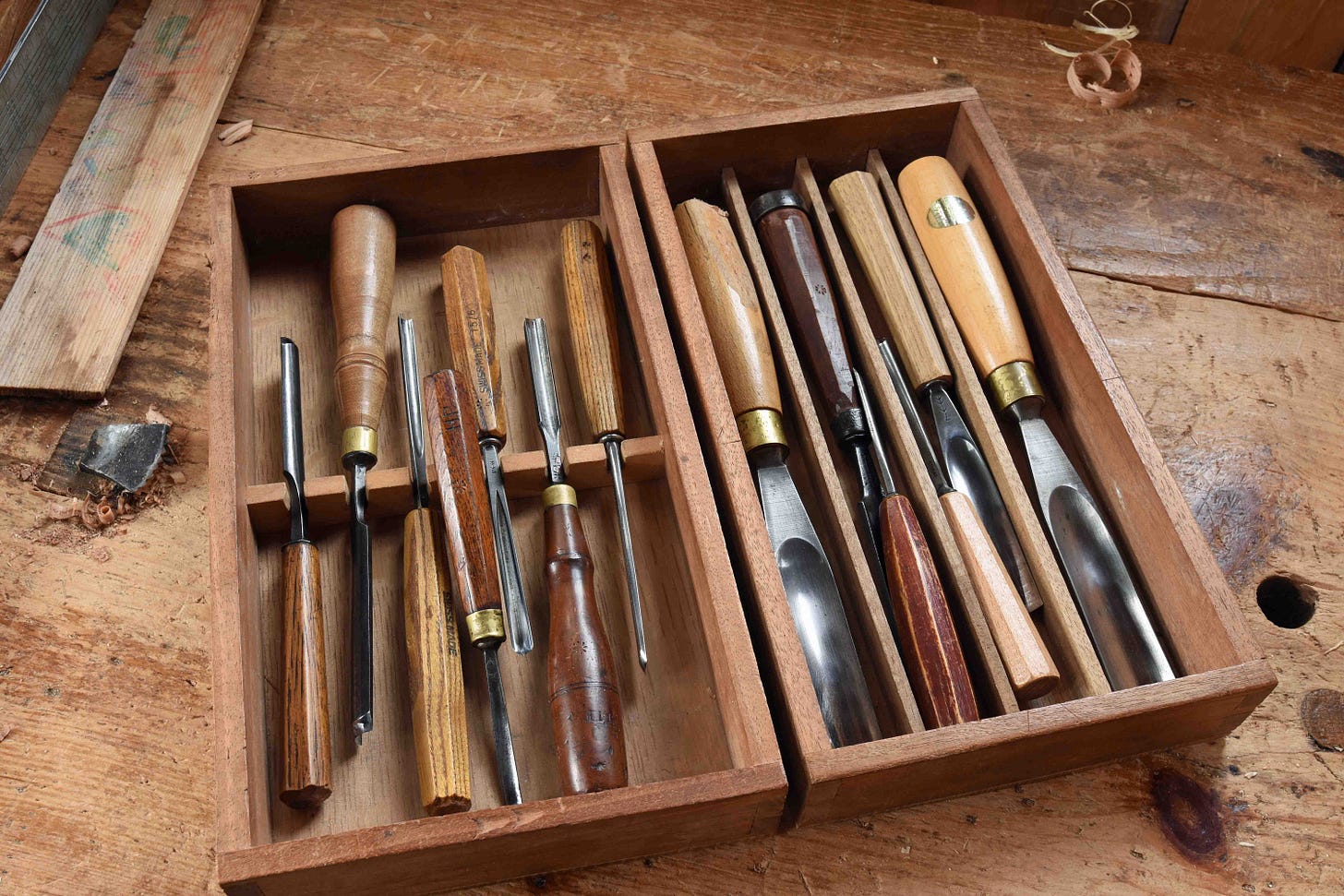I’m still carving - in between planing up all that green wood I brought home. I appreciate the response to my newest carving video on the strapwork patterns. One question I always get is about tools - which ones, which sizes, etc. I’ve clipped out of the videos a section in which I discuss the tools and show how I indicate during the carving which tool is which...posted here for all subscribers - the only thing below the paywall this time is the discount code for paid subscribers to receive 20% off the price of the videos…
[UPDATE: For some stupid reason, I’ve been challenged at every turn video-wise lately. Today’s post had/has a 6-minute video in which I show you about my carving gouges. Except all day that video was truncated at about 1 1/2 minutes. It’s all there now, my apologies…]
Over the years I’ve assembled a collection of carving gouges that suit my work - copying 17th-century patterns isn’t particularly hard and the number of carving tools is relatively small.
But - my tools are a combination of new and old tools. Some with number-designations, many without. So what size/number are they? What do those numbers mean anyway? These are questions I get regularly, any carver does. I’ve often frustrated students with my answers. When I first started teaching carving, I just took a piece of scrap wood and struck the impressions of my tools into it & said “Get something close to these...”
Swiss-Made carving gouges are maybe the most commonly found carving tools these days, in the US anyway. The company that makes them is Pfeil - that name is not on the tools, they’re always marked on the handles “Swiss Made.” They have a numbering system that might read “7/14” - the 7 is the “sweep” - the amount of curvature across the tool’s cutting edge. Then 14 is the width across that edge, in millimeters. The lower the sweep number, the flatter the tool - 1 is flat. 9 is deeply curved.
The frustrating aspect of this system is one manufacturer’s systems don’t necessarily line up with another’s. So an English number 7 might not agree with the Swiss number 7. And old tools sometimes had numbers, most often did not.
When I began working with Jeff Lefkowitz to develop some carving “plans” - (drawings really) we adopted a system from Hans Karlsson, the Swedish blacksmith, for designating the tools’ curvature and size. The tool’s edge is a segment of a circle, so Karlsson illustrated it that way - and Jeff created a PDF for me to show the tools I use that way. You can download that chart here - but I’ve since added a few tools and will update it soon...when I do I’ll post it again.
Here is a 6-minute intro to the tools I use, how Jeff & I arrived at describing their shape, etc -
I still maintain that you don’t need the exact tools I use - something close will get you something close. The carvings I’m copying were done with handmade tools - there’s plenty of leeway involved. I still think the best advice is to get a few tools, start carving and add tools as you gain experience…
The link to the vimeo-on-demand page where you can purchase the carving videos is here - https://vimeo.com/ondemand/follansbeestrapwork
…………………….
And an earlier carving series I did on some panels from Dedham, Massachusetts is here https://vimeo.com/ondemand/dedhamcarvingsfollansbee
Keep reading with a 7-day free trial
Subscribe to Follansbee's Substack to keep reading this post and get 7 days of free access to the full post archives.




